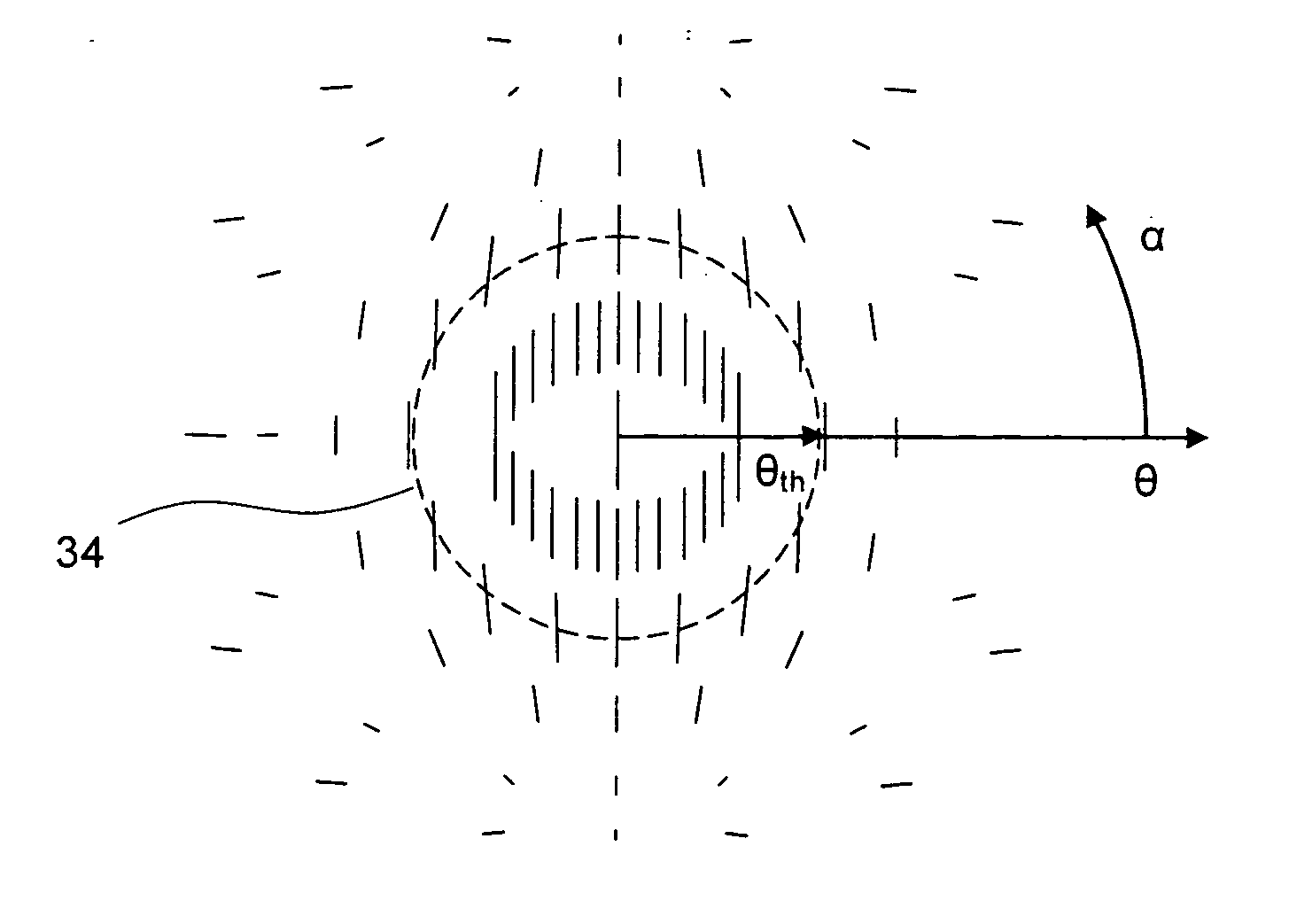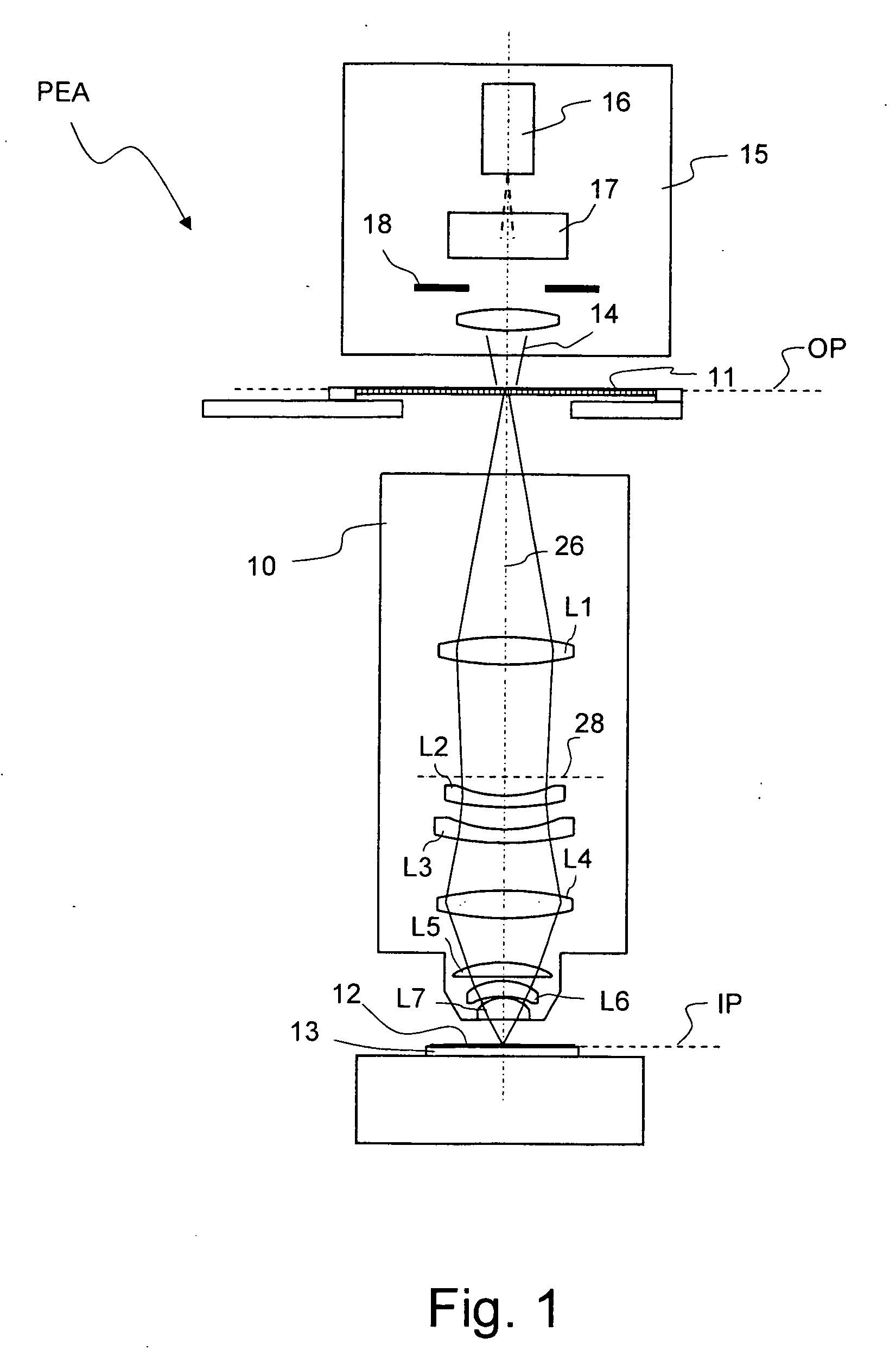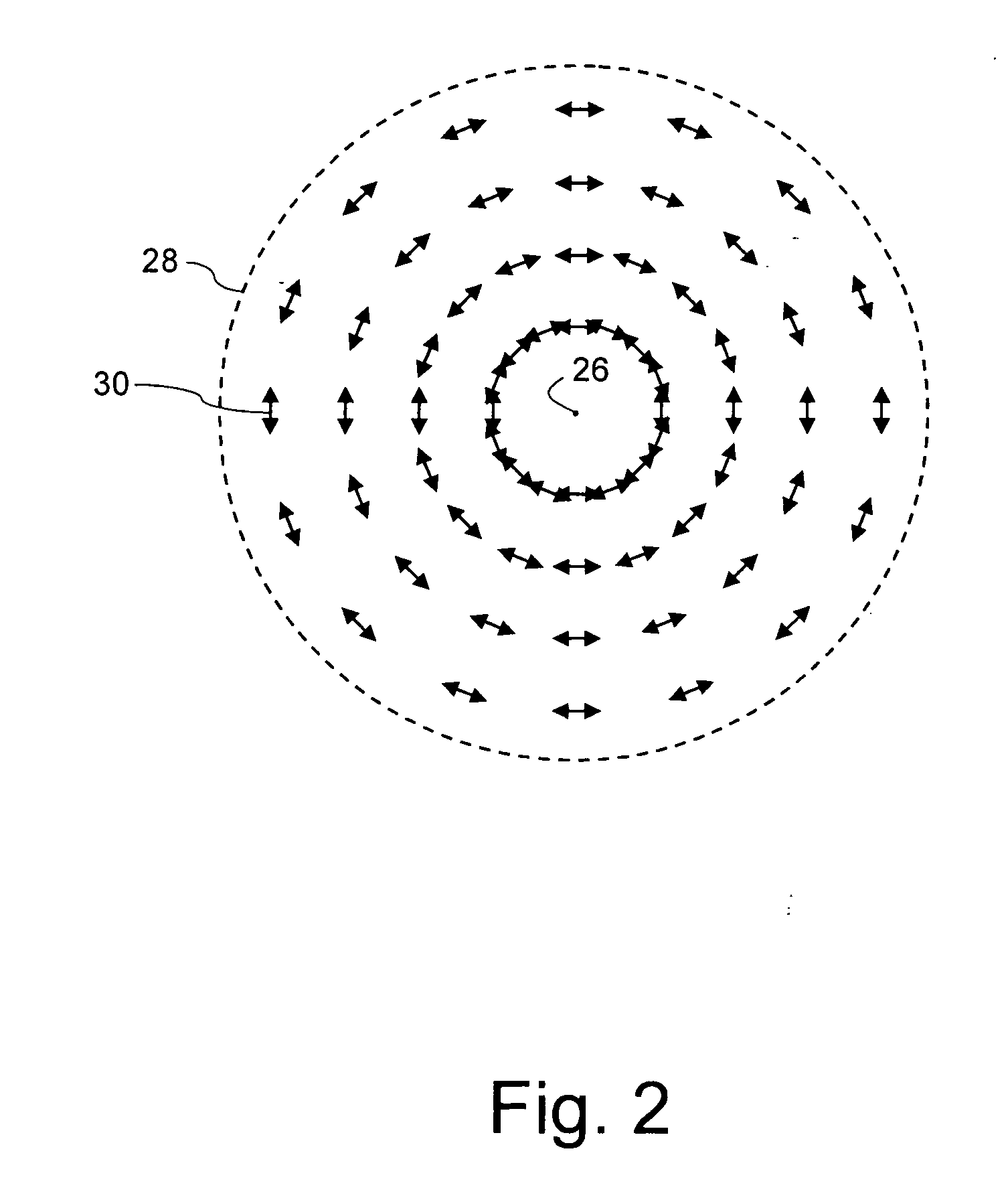Optical system of a microlithographic projection exposure apparatus
a microlithographic and exposure apparatus technology, applied in the direction of photomechanical apparatus, polarising elements, instruments, etc., can solve the problems of stress-induced birefringence, permanent stress-induced birefringence, and general dissolution of birefringen
- Summary
- Abstract
- Description
- Claims
- Application Information
AI Technical Summary
Benefits of technology
Problems solved by technology
Method used
Image
Examples
Embodiment Construction
[0038]FIG. 1 shows a meridional section through a microlithographic projection exposure apparatus, denoted in its entirety by PEA, in a highly schematic representation. The projection exposure apparatus PEA comprises an illumination system 15 for producing a projection light beam 14. In the exemplary embodiment shown, the wavelength of the projection light is λ=193 nm. The illumination system 15 contains a light source 16, illumination optics indicated by 17 and a diaphragm 18. The illumination optics 17 makes it possible to set different illumination angle distributions. To this end the illumination system may contain interchangeable diffractive optical elements or microlens arrays, for example. The illumination optics 17 may furthermore contain axicon elements which are arranged so that they can be moved along an optical axis 26. Since such illumination optics are known in the prior art, see for example U.S. Pat. No. 6,285,443 A, whose full disclosure is incorporated herein by ref...
PUM
 Login to View More
Login to View More Abstract
Description
Claims
Application Information
 Login to View More
Login to View More - R&D
- Intellectual Property
- Life Sciences
- Materials
- Tech Scout
- Unparalleled Data Quality
- Higher Quality Content
- 60% Fewer Hallucinations
Browse by: Latest US Patents, China's latest patents, Technical Efficacy Thesaurus, Application Domain, Technology Topic, Popular Technical Reports.
© 2025 PatSnap. All rights reserved.Legal|Privacy policy|Modern Slavery Act Transparency Statement|Sitemap|About US| Contact US: help@patsnap.com



